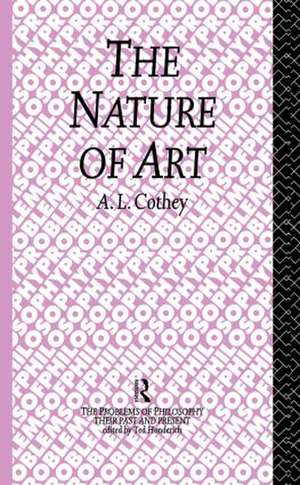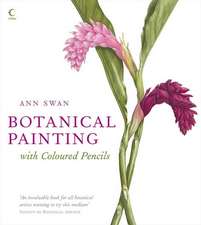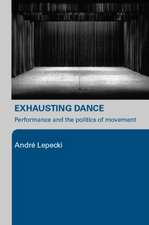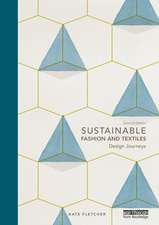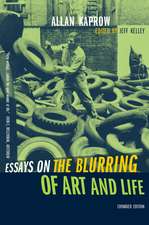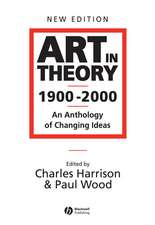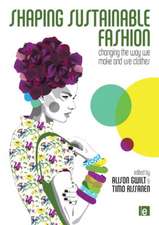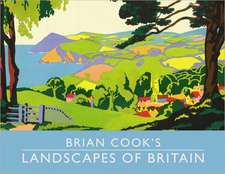The Nature of Art: Problems of Philosophy
Autor A. L. Cotheyen Limba Engleză Paperback – 16 dec 2013
| Toate formatele și edițiile | Preț | Express |
|---|---|---|
| Paperback (1) | 462.60 lei 43-57 zile | |
| Taylor & Francis – 16 dec 2013 | 462.60 lei 43-57 zile | |
| Hardback (1) | 1214.92 lei 43-57 zile | |
| Taylor & Francis – 13 dec 1990 | 1214.92 lei 43-57 zile |
Din seria Problems of Philosophy
-
 Preț: 452.99 lei
Preț: 452.99 lei -
 Preț: 451.41 lei
Preț: 451.41 lei - 31%
 Preț: 270.20 lei
Preț: 270.20 lei - 28%
 Preț: 875.13 lei
Preț: 875.13 lei -
 Preț: 429.82 lei
Preț: 429.82 lei -
 Preț: 364.00 lei
Preț: 364.00 lei -
 Preț: 366.89 lei
Preț: 366.89 lei - 18%
 Preț: 1339.08 lei
Preț: 1339.08 lei -
 Preț: 215.49 lei
Preț: 215.49 lei -
 Preț: 369.18 lei
Preț: 369.18 lei -
 Preț: 364.94 lei
Preț: 364.94 lei -
 Preț: 313.28 lei
Preț: 313.28 lei -
 Preț: 450.40 lei
Preț: 450.40 lei -
 Preț: 467.44 lei
Preț: 467.44 lei -
 Preț: 365.87 lei
Preț: 365.87 lei -
 Preț: 366.56 lei
Preț: 366.56 lei -
 Preț: 363.96 lei
Preț: 363.96 lei -
 Preț: 365.87 lei
Preț: 365.87 lei -
 Preț: 468.03 lei
Preț: 468.03 lei -
 Preț: 482.94 lei
Preț: 482.94 lei - 18%
 Preț: 1001.39 lei
Preț: 1001.39 lei -
 Preț: 415.24 lei
Preț: 415.24 lei
Preț: 462.60 lei
Nou
Puncte Express: 694
Preț estimativ în valută:
88.55€ • 96.21$ • 74.43£
88.55€ • 96.21$ • 74.43£
Carte tipărită la comandă
Livrare economică 21 aprilie-05 mai
Preluare comenzi: 021 569.72.76
Specificații
ISBN-13: 9780415862004
ISBN-10: 0415862000
Pagini: 216
Dimensiuni: 138 x 216 mm
Greutate: 0.29 kg
Ediția:1
Editura: Taylor & Francis
Colecția Routledge
Seria Problems of Philosophy
Locul publicării:Oxford, United Kingdom
ISBN-10: 0415862000
Pagini: 216
Dimensiuni: 138 x 216 mm
Greutate: 0.29 kg
Ediția:1
Editura: Taylor & Francis
Colecția Routledge
Seria Problems of Philosophy
Locul publicării:Oxford, United Kingdom
Cuprins
Introduction; 1. Art is anomalous; 2. Forms of aesthetic scepticism: philistines and iconoclasts; 3. Historical note; 4. The central issues; 5. Aestheticism; Section 01 I Hedonism and the Theory of Taste; Section 01-01-01 1. General objections; Section 01-01-02 2. Beauty as a secondary quality: Hutcheson, Reid, Burke; Section 01-01-03 3. Beauty as a primary quality: Santayana. Bell; Section 01-01-04 4. Hume’s theory; Section 02 II Theories that Assign a Direct Practical F’urpose to Art; Section 02-01-01 1. Nutritional and medicinal analogies; Section 02-01-02 2. General difficulties; Section 02-01-03 3. Art as substitute satisfaction: Freud; Section 02-01-04 4. Tolstoy’s theory; Section 02-01-05 5. Art as a pseudo-capacity: Plato; Section 02-01-06 6. Beauty and inspiration: Plato; Section 02-01-07 7. Metaphysical aestheticism: Plotinus; Section 03 III Perfection and the Play of Cognition; Section 03-01-01 1. Aristotle’s theory of pleasure; Section 03-01-02 2. Beauty and perfection: a dilemma; Section 03-01-03 3. Rationalist aesthetics: Leibniz, Baumgarten; Section 03-01-04 4. Kant’s theory (I): the existence of a non-cognitive aim of cognition; Section 03-01-05 5. Kant’s theory (2): the sublime and the moral signijicance of beauty; Section 04 IV Art as the Experience of Metaphysical Truth; Section 04-01-01 1. The reception of Kant’s theory: Schiller, Schelling; Section 04-01-02 2. Art and nature: Schelling; Section 04-01-03 3. Art as the ‘sensuous presentation of the Absolute’: Hegel; Section 04-01-04 4. Hegel’s iconoclasm; Section 04-01-05 5. Art as respite: Schopenhauer; Section 04-01-06 6. Schopenhauer on music; Section 04-01-07 7. Conclusion: the needfor a theory offorms of knowledge; Section 05 V Art as Language; Section 05-01-01 1. Knowledge by acquaintance; Section 05-01-02 2. The phenomenological approach: Dufrenne; Section 05-01-03 3. Croce’s theory of intuition and expression; Section 05-01-04 4. Presentational symbols: Langer; Section 05-01-05 5. Art and the general theory of symbols: Goodman; Section 06 VI Art and Metaphor; Section 06-01-01 1. The relevance of metaphor; Section 06-01-02 2. Theories of metaphor; Section 06-01-03 3. Literalist and tropist prejudices; Section 06-01-04 4. Dead and faint metaphor; Section 06-01-05 5. Viewpoints and exponability; Section 06-01-06 6. Art as metaphor; Section 06-01-07 7. Unanswered questions; Section 07 VII Virtues and Indirect Pleasures; Section 07-01-01 1. A problem about pleasure and ‘completeness’; Section 07-01-02 2. Cognitive virtues; Section 07-01-03 3. A pragmatic theory of beauty; Section 07-01-04 4. Art as recreation; Section 07-01-05 5. The ‘institutional’ theory of art; Section 07-01-06 6. Cognitive pleasure: Aristotle on happiness; Section 08 VIII The Aim Behind Perception; Section 08-01-01 1. Cognition and the essentially metaphorical; Section 08-01-02 2. The intellect and the senses: Aristotle; Section 08-01-03 3. Further problems in understanding particulars; Section 08-01-04 4. The imagination as a pseudo-capacity; Section 08-01-05 5. Perception and kinaesthetic experience; Section 08-01-06 6. Productive skills and conceptual empathy; Section 09 IX Aesthetic Satisfaction; Section 09-01-01 1. Peculiarities of aesthetic enjoyment; Section 09-01-02 2. Perceptual knowledge; Section 09-01-03 3. Aesthetic understanding (1): empathic enjoyment; Section 09-01-04 4. Aesthetic understanding (2): beauty and necessity; Section 09-01-05 5. Beauty and experiential knowledge; Section 10 X Art and Artistic Abilities; Section 10-01-01 1. Questions about art; Section 10-01-02 2. Two theories of artistic abilities; Section 10-01-03 3. Creative imagination; Section 10-01-04 4. Inspiration and works of art; Section 10-01-05 5. Inspiration and artistic success; Section 10-01-06 6. Understanding art; Section 10-01-07 7. The value of art: aesthetic experience as a source of meaning; Bibliography; Index;
Descriere
Cothey gives a concise and systematic account of the leading philosophical ideas about art and aesthetics from ancient times to the present day.
